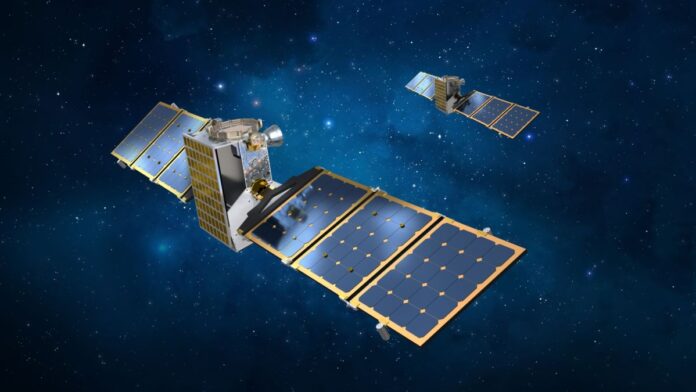Scientists are working hard to try to salvage a pair of spacecraft that lost their launch — and the solution might include the most notorious asteroid out there, Apophis.
NASA’s Janus mission was designed to send two spacecraft past two binary asteroids, giving scientists their first close look at this category of object. The mission, which was meant to cost no more than $55 million, was due to launch between August and October 2022 with the Psyche mission that will explore a metal-rich asteroid. But Psyche wasn’t ready to launch last year and will instead launch this October — leaving the Janus team’s two perfectly good spacecraft grounded.
“Suddenly, we don’t have a launch,” Dan Scheeres, an aerospace engineer at the University of Colorado Boulder and principal investigator of the Janus mission, said on Wednesday (Jan. 25) to a meeting of the Small Bodies Assessment Group held in California and online. “Suddenly, everything we were designed to do is not nominally achievable.”
Related: The greatest asteroid missions of all time!
There’s still room aboard Psyche’s rocket for the hitchhikers, of course, but the larger mission’s new launch plan would make Janus’ original design impossible.
“Within three months, we would not have enough power to thrust; within five months, we wouldn’t have enough power to do anything,” Scheeres said. “Basically, we’d be a brick in less than five months. And there were no real science opportunities between launch and that time period.”
So NASA and the Janus team are working to determine whether there are other rockets launching soon that may be able to send the spacecraft on their way to a different intriguing target. In particular, the team is looking for a ride that would carry the spacecraft out to either one of the gravitational “parking spots” located on each side of Earth with respect to the sun. From there, loops around Earth or the moon would give the team a range of trajectory options, Scheeres said.
“We found several binary asteroid flyby candidates that we could get to using this sort of an approach, including some of our original targets,” he said. “Of course, that is very exciting because then that might allow us to recover our original science goals.”
But one particular opportunity has caught people’s notice. If the Janus spacecraft can find a ride by early 2028, scientists could use one or both of the spacecraft to scout out the large asteroid Apophis before its super-close approach to Earth in April 2029. (If only one spacecraft visits Apophis, scientists would see only about half of the asteroid but could send the second spacecraft elsewhere; if both spacecraft fly past the same object they can be arranged to reveal the whole surface.)
Scientists suspect that Apophis’ close approach, which will carry the skyscraper-sized rock within the ring of Earth’s geosynchronous satellites, will have some serious consequences for the asteroid as Earth’s gravity stretches the rock.
NASA has found a way to see the aftermath of the flyby: The OSIRIS-REx mission, after dropping asteroid samples on Earth in September, will continue on to Apophis, arriving at the rock just one week after its dramatic flyby and studying it in detail for about 18 months. If Janus’ reinvention carries it past Apophis, the mission could provide the “before” view for scientists to compare.
“We have two awesome spacecraft that we will be able to launch,” Scheeres said. “We could send them to asteroids that would help fulfill our original science goals or we can also take an opportunistic approach, and we plan to work closely with NASA on seeing what the right pathway forward is.”
Email Meghan Bartels at [email protected] or follow her on Twitter @meghanbartels. Follow us on Twitter @Spacedotcom and on Facebook.

